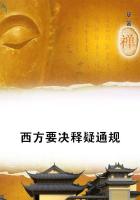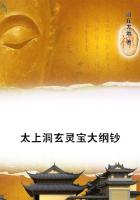>From New Jersey and Illinois southward, particularly in mountainous regions, if not among the mountains themselves, the FRINGELESS PURPLE ORCHIS (H.perarnoena) may be found blooming in moist meadows through July and August.Moisture, from which to manufacture the nectar that orchids rely upon so largely to entice insects to work for them, is naturally a prime necessity;yet Sprengel attempted to prove that many orchids are gaudy shams and produce no nectar, but exist by an organized system of deception."Scheinsaftblumen" he called them.From the number of butterflies seen hovering about this fringeless orchis and its more attractive kin, it is small wonder their nectaries are soon exhausted and they are accused of being gay deceivers.Sprengel's much-quoted theory would credit moths, butterflies, and even the highly intelligent bees with scant sense; but Darwin, who thoroughly tested it, forever exonerated these insects from imputed stupidity and the flowers from gross dishonesty.He found that many European orchids secrete their nectar between the outer and inner walls of the tube, which a bumblebee can easily pierce, but where Sprengel never thought to look for it.The large lip of this orchis is not fringed, but has a fine picotee edge.The showy violet-purple, long-spurred flowers are alternately set on a stem that is doing its best if it reach a height of two and a half feet.
WATER-SHIELD or WATER TARGET
(Brasenia purpurea; B.peltata of Gray) Water-lily family Flowers - Small, dull purplish, about 1/2 in.across, on stout footstalks from axils of upper leaves; 3 narrow sepals and petals; stamens 12 to 18; pistils 4 to 18, forming 1 to 3-seeded pods.Stem: From submerged rootstock; slender, branching, several feet long, covered with clear jelly, as are footstalks and lower leaf surfaces.Leaves: On long petioles attached to center of underside of leaf, floating or rising, oval to roundish, 2 to 4in.long, 1 1/2 to 2 in.wide.
Preferred Habitat - Still, rather deep water of ponds and slow streams.
Flowering Season - All summer.
Distribution - Parts of Asia, Africa, and Australia, Nova Scotia to Cuba, and westward from California to Puget Sound.
Of this pretty water plant Dr.Abbott says, in "Wasteland Wanderings": "I gathered a number of floating, delicate leaves, and endeavored to secure the entire stem also; but this was too difficult a task for an August afternoon.The under side of the stem and leaf are purplish brown and were covered with translucent jelly, embedded in which were millions of what I took to be insects' eggs.They certainly had that appearance.I was far more interested to find that, usually, beneath each leaf there was hiding a little pike.The largest was not two inches in length.When disturbed, they swam a few inches, and seemed wholly 'at sea' if there was not another leaf near by to afford them shelter."EUROPEAN or COMMON GARDEN COLUMBINE
(Aquilegia vulgaris) Crowfoot family Flowers - Showy, blue, purple, or white, 1 1/2 to 2 in.broad, or about as broad as long; spurs stout and strongly incurved.
General characteristics of plant resembling wild columbine.
Preferred Habitat - Escaped from gardens to woods and fields in Eastern and Middle States.Native of Europe.
Flowering Season - May-July.
A heavier, less graceful flower than either the wild red and yellow columbine or the exquisite, long-spurred, blue and white species (A.coerulea) of the Rocky Mountain region; nevertheless this European immigrant, now ****** itself at home here, is a charming addition to our flora.How are insects to reach the well of nectar secreted in the tip of its incurved, hooked spur?
Certain of the long-lipped bees, large bumblebees, whose tongues have developed as rapidly as the flower, are able to drain it.
Hummingbirds, partial to red flowers, fertilize the wild columbine, but let this one alone.Muller watched a female bumblebee ****** several vain attempts to sip this blue one.Soon the brilliant idea of biting a hole through each spur flashed through her little brain, and the first experiment proving delightfully successful, she proceeded to bite holes through other flowers without first trying to suck them.Apparently she satisfied her feminine conscience with the reflection that the flower which made dining so difficult for its benefactors deserved no better treatment.
FIELD or BRANCHED LARKSPUR; KNIGHT'S-SPUR; LARK-HEEL(Delphinium Consoilda) Crowfoot family Flowers - Blue to pinkish and whitish, 1 to 1 1/2 in.long, hung on slender stems and scattered along spreading branches; 5petal-like sepals, the rear one prolonged into long, slender, curving spur; 2 petals, united.Stem: 1 to 2 1/2 ft.high.
Leaves: Divided into very finely cut linear segments.Fruit:
Erect, smooth pod tipped with a short beak; open on one side.
Preferred Habitat - Roadsides and fields.
Flowering Season - June-August.
Distribution - Naturalized from Europe; from New Jersey southward, occasionally escaped from gardens farther north.
Keats should certainly have extolled the larkspurs in his sonnet on blue.No more beautiful group of plants contributes to the charm of gardens, woods, and roadsides, where some have escaped cultivation and become naturalized, than the delphinium, that take their name from a fancied resemblance to a dolphin (delphin), given them by Linnaeus in one of his wild flights of imagination.Having lost the power to fertilize themselves, according to Muller, they are pollenized by both bees and butterflies, insects whose tongues have kept pace with the development of certain flowers, such as the larkspur, columbine, and violet, that they may reach into the deep recesses of the spurs where the nectar is hidden from all but benefactors.














